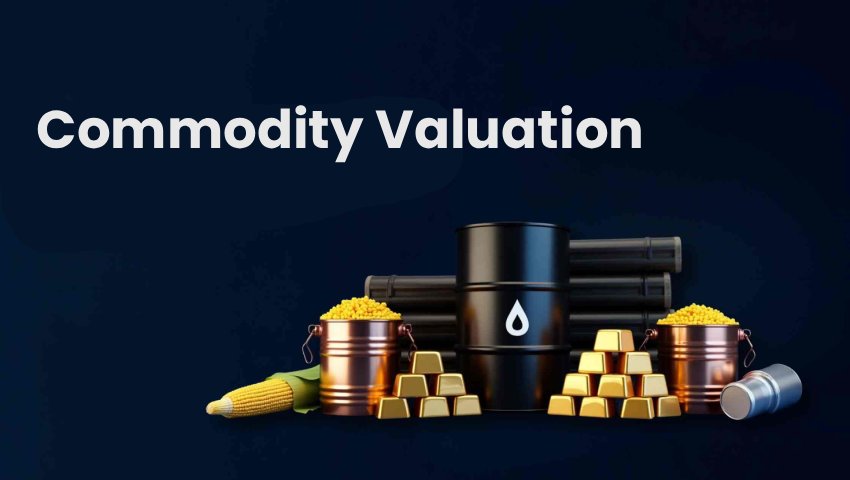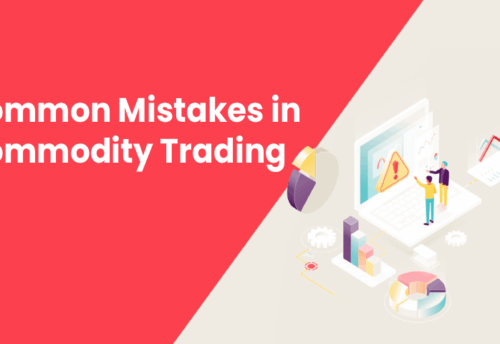
- 12/09/2025
- MyFinanceGyan
- 684 Views
- 2 Likes
- Finance
Commodity Valuation: An In-Depth Guide to Pricing in Commodity Markets
Commodity markets form the backbone of the global economy. From ensuring food security to driving industrial manufacturing and powering energy supply, commodities influence almost every sector. Whether you are a farmer, trader, investor, or corporate executive, understanding commodity valuation—how commodities are priced—is essential for decision-making, investment strategies, and risk management. Unlike equities or bonds, commodities do not generate dividends or interest. Their valuation depends on supply-demand forces, geopolitical developments, and market sentiment. This makes commodity pricing both fascinating and complex. In this guide, we will explore the principles of commodity valuation, methods of pricing, challenges, and practical applications.
What is Commodity Valuation?
Commodity valuation is the process of determining the fair or intrinsic price of a commodity in a competitive market. It reflects supply-demand dynamics, production costs, global economic conditions, and geopolitical risks. In economics, the equilibrium price is discovered where the supply and demand curves intersect. However, in real-world commodity markets, external factors—such as weather, storage, speculation, and government intervention—often push prices away from equilibrium. Since commodities do not produce future cash flows, traditional financial models like Discounted Cash Flow (DCF) are unsuitable. Instead, valuation focuses on fundamental and market-driven variables unique to each commodity.
Importance of Commodity Valuation:
Accurate valuation plays a critical role for multiple stakeholders:
- Investment Decisions: Helps investors identify undervalued or overpriced commodities.
- Price Discovery: Ensures transparency and efficient allocation of resources.
- Risk Management: Enables producers and consumers to hedge against volatility.
- Policy Formulation: Assists governments in managing trade, subsidies, and reserves.
- Corporate Planning: Guides procurement, production, and pricing strategies.
- Market Efficiency: Discourages manipulation by aligning prices with fundamentals.
Key Factors Influencing Commodity Prices:
Commodity markets are highly sensitive to global events and market forces. Some key factors include:
- Supply and Demand:
- Supply Side: Production levels, natural resource availability, geopolitical tensions, mining/agriculture output, weather, and technology.
- Demand Side: Industrial growth, consumer demand, substitutes, seasonal cycles, and government policies.
- Cost of Production: Higher extraction or cultivation costs set a minimum floor price.
- Storage and Transportation Costs: Perishable and bulky commodities often factor in additional costs, especially in futures pricing.
- Geopolitical Events: Wars, trade restrictions, sanctions, and diplomatic relations can disrupt supply chains.
- Macro-Economic Indicators: GDP growth, inflation, interest rates, and currency exchange rates directly influence prices.
- Market Sentiment and Speculation: Speculative trading and hedge fund activities often push prices beyond fundamentals.
- Seasonal and Climate Factors: Agriculture is particularly vulnerable to rainfall patterns, harvesting cycles, and climatic shifts.
Methods of Commodity Valuation:
Different commodities require different approaches. Common valuation methods include:
- Supply-Demand Equilibrium Model: Uses historical and forecasted production, consumption, and trade data to estimate equilibrium prices.
- Example: Wheat pricing considers yield, planted area, consumption, and trade flows.
- Cost of Production Approach: Calculates commodity value based on production, labor, capital, and compliance costs. Widely used in mining and energy.
- Futures Price-Based Valuation: Futures contracts on exchanges reflect collective market expectations. Adjustments are made for carrying costs, storage, insurance, and interest.
- Formula or Sliding-Scale Pricing: Common in long-term contracts where price = benchmark price ± adjustments for quality, grade, or delivery location.
- Average or Rolling Price Mechanisms: Uses average prices over a set period to smooth out volatility, often applied in long-term contracts.
Pricing Structures in Commodities:
Commodity contracts may follow different pricing structures:
- Fixed Price: Agreed upon at contract initiation; provides certainty.
- Variable Price: Fluctuates with market rates at delivery.
- Floor and Ceiling Price: Provides minimum and maximum price protection.
- Floating Price: Average market price over a specific period.
Role of Commodity Exchanges:
Commodity exchanges such as MCX (Multi-Commodity Exchange) and NCDEX (National Commodity & Derivatives Exchange) in India play a vital role in valuation.
- Provide a transparent, regulated platform for buyers and sellers.
- Facilitate real-time price discovery through competitive bidding.
- Offer futures and options for hedging and risk management.
- Enhance liquidity and accessibility for investors globally.
Challenges in Commodity Valuation:
Valuing commodities is not without hurdles:
- Volatility: Prices often swing sharply due to external shocks.
- Data Limitations: Reliable supply-demand data may be delayed or incomplete.
- Geopolitical Risks: Unpredictable events disrupt markets suddenly.
- Storage & Quality Issues: Physical conditions (perishability, grade) affect price.
- Government Intervention: Subsidies, tariffs, and policies may distort market signals.
Case Studies - Commodity Pricing in Practice:
Gold:
- Valued as a hedge against inflation and uncertainty.
- Driven by jewelry demand, central bank reserves, investor appetite, and mining output.
Crude Oil:
- Influenced by OPEC decisions, global demand cycles, geopolitical conflicts, and renewable energy trends.
- Futures contracts and inventories play a central role in pricing.
Agricultural Commodities:
- Dependent on weather, crop yields, pest outbreaks, and government interventions (like MSPs in India).
- Exhibit strong seasonality and regional variations.
Using Commodity Valuation in Investment Decisions:
Investors and businesses can apply valuation in several ways:
- Identify arbitrage and trading opportunities.
- Use futures and options to hedge against adverse price movements.
- Monitor key economic data releases for price forecasts.
- Combine fundamental valuation with technical analysis for better timing.
Conclusion:
Commodity valuation is both a science and an art. It requires blending economics, market data, and geopolitical insights. For traders, businesses, and policymakers, mastering valuation is essential for navigating volatile markets, making informed decisions, and ensuring financial stability. In today’s interconnected world, technological advancements and better data availability are making valuation more precise and accessible. By understanding the principles of commodity pricing, stakeholders can engage more confidently in global markets—whether for trading, investing, or policy-making.
Disclaimer: The views expressed in this article are personal and intended solely for educational purposes. This content does not constitute financial or investment advice or promote any specific products.



